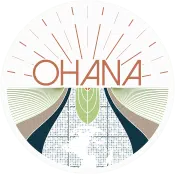

About the author:
Rannveig van Iterson is the head of circularity at Ohana Public Affairs who leads and coordinates the team’s efforts on circular economy, eco-design and waste policies and works passionately on developing innovative sustainability strategies to support organisations in achieving their business ambitions while still advancing the EU’s green transition.
Get to know Rannveig and Ohana’s complete team of expert consultants.
ESPR & the Fashion Industry: How to Prepare for the Ban on the Destruction of Unsold Goods
On December 5th, 2023, the EU Council and the Parliament reached a provisional political agreement on the Ecodesign for Sustainable Products Regulation (ESPR), initially presented by the Commission in March 2022. The final adoption is expected during spring 2024.
The new ESPR establishes a transformative approach to how products are designed, produced, and disposed of in the EU, which is why it will be the subject of our new blog series. In this first article, I will offer you an introduction to the text adopted in December, and a deep dive into its proposed ban on the destruction of unsold goods. Later in the series, we will cover other aspects of the ESPR, such as the ecodesign measures and the Digital Product Passport, so stay tuned for more expert insights on this critical piece of the EU sustainability strategy.
Want someone with deep experience and connections in the EU to help guide your sustainability strategy? Get in touch!
Understanding the Ecodesign for Sustainable Products Regulation (ESPR)
The Ecodesign for Sustainable Products Regulation has been developed to replace the existing 2009 Ecodesign Directive, expanding its scope for greater impact. The prior directive focused primarily on boosting the efficiency of energy-related products, having achieved a substantial reduction in energy expenditure across 31 product groups. Building on this success, the ESPR broadens its reach to encompass nearly all categories of products commercialised in the EU, with a few exceptions, such as goods that have an impact on defence or national security.
The ESPR’s ecodesign requirements should ensure that goods have a reduced environmental impact during their production and use, but the regulation also sets rules for how to handle unsold goods, as I will explain below.
Dealing With Unsold Goods
One key part of transitioning to an economy where only sustainable products are consumed, is to tackle the destruction of unsold goods, a practice that has significantly grown within the block, according to the Commission, as a result of the surge in online shopping. Especially prevalent within the textile and apparel industries, this issue intensifies the strain on our natural resources, as an increasing number of products are manufactured, transported, and disposed of without ever being used.
To address the problem, and in line with the terms of the Waste Framework Directive, the ESPR introduces rules that should hold EU businesses increasingly accountable for the environmental impacts of the unsold goods and waste they produce.
New Reporting Obligations
While the destruction of unsold products by online retailers, among others, has made it to the headlines every so often, in reality, we know very little about the scale at which it happens, and the economic operators involved.
Since understanding the size of the problem is essential to solving it, the ESPR includes reporting obligations regarding the destruction of unsold goods, which are defined as any consumer product that has not been sold or that has been returned by a consumer.
According to the text, all economic operators that directly discard unsold consumer products or have them discarded on their behalf, shall disclose:
- The number, weight, or percentage of unsold consumer products discarded per year, differentiated by type or category of products;
- The reasons for the discarding of products and, where applicable, the relevant exemption;
- The proportion of the delivery of discarded products to preparing for re-use, remanufacturing, recycling, energy recovery, and disposal operations;
- Measures taken and measures aimed at preventing the destruction of unsold goods.
These will be annual reports, reporting on unsold consumer products discarded in the prior financial year, and must be public and easily accessible.
The Ban on the Destruction of Unsold Apparel and Footwear
In addition to the reporting requirements, the Ecodesign for Sustainable Products Regulation establishes a direct ban on the destruction of unsold apparel, clothing accessories, and footwear within the EU.
According to the Commission, destruction in this context is defined as the last three activities on the waste hierarchy: recycling, other recovery, and disposal, while preparation for re-use, refurbishing, and remanufacturing do not count as destruction.
Exemptions to the destruction ban are yet to be set. Such exemptions will be granted where justified, taking into account factors such as health and safety, irreparable damage to returned products, unsuitability of the product for its intended purpose, rejection of the product for donation, violation of intellectual property rights, or when destruction is considered the most environmentally friendly option.
Scope and Implementation Timeline
For large organisations, the first report must include goods discarded during the first full financial year of the ESPR being in force, likely in 2026 in regards to 2025 numbers. The ban on destruction on unsold apparel and footwear products is anticipated to come into force the same year.
For medium-sized companies the obligations apply within six years after the entry into force date, while small and micro-economic enterprises are currently exempt from the obligations.
Getting Ready for Compliance: Advice for EU Businesses
Environmental laws such as the Corporate Sustainability Reporting Directive and many others proposed by the EU demonstrate that companies trading in the EU should ready themselves for much higher transparency and accountability standards in the near future.
As I see it, it’s crucial for fashion companies to improve their inventory management practices, given that upcoming rules will forbid the recycling or disposal of unsold and returned items. Considering the significant environmental impact of the sector, developing a new model in which items are produced to meet actual demand would be the best course of action. In addition, when companies must disclose the leftover unsold goods, I believe it is key that companies think through the reputational consequences of disclosing significant volumes.
This is, in fact, an important consideration for economic operators from all industries.
I believe that next in line for similar prohibitions could be the Electrical and Electronic Equipment (EEE) and Information and Communication Technology (ICT) sectors, and the scope of the legislation is bound to keep expanding to support the EU’s green ambitions.
Concerning the new reporting obligations, my advice for organisations across the board would be to interpret how the definition of ‘unsold goods’ applies to your sector and begin to think of how to plan for the disclosure obligation and justify any potential cases of destruction.
If you want to ensure timely compliance and a smooth transition into more sustainable practices for your organisation, our team at Ohana has the complete set of skills to help you future-proof your business.
Want someone with deep experience and connections in the EU to help guide your sustainability strategy? Get in touch!
Join our newsletter to keep up to date with the latest news and information coming out of the EU.


